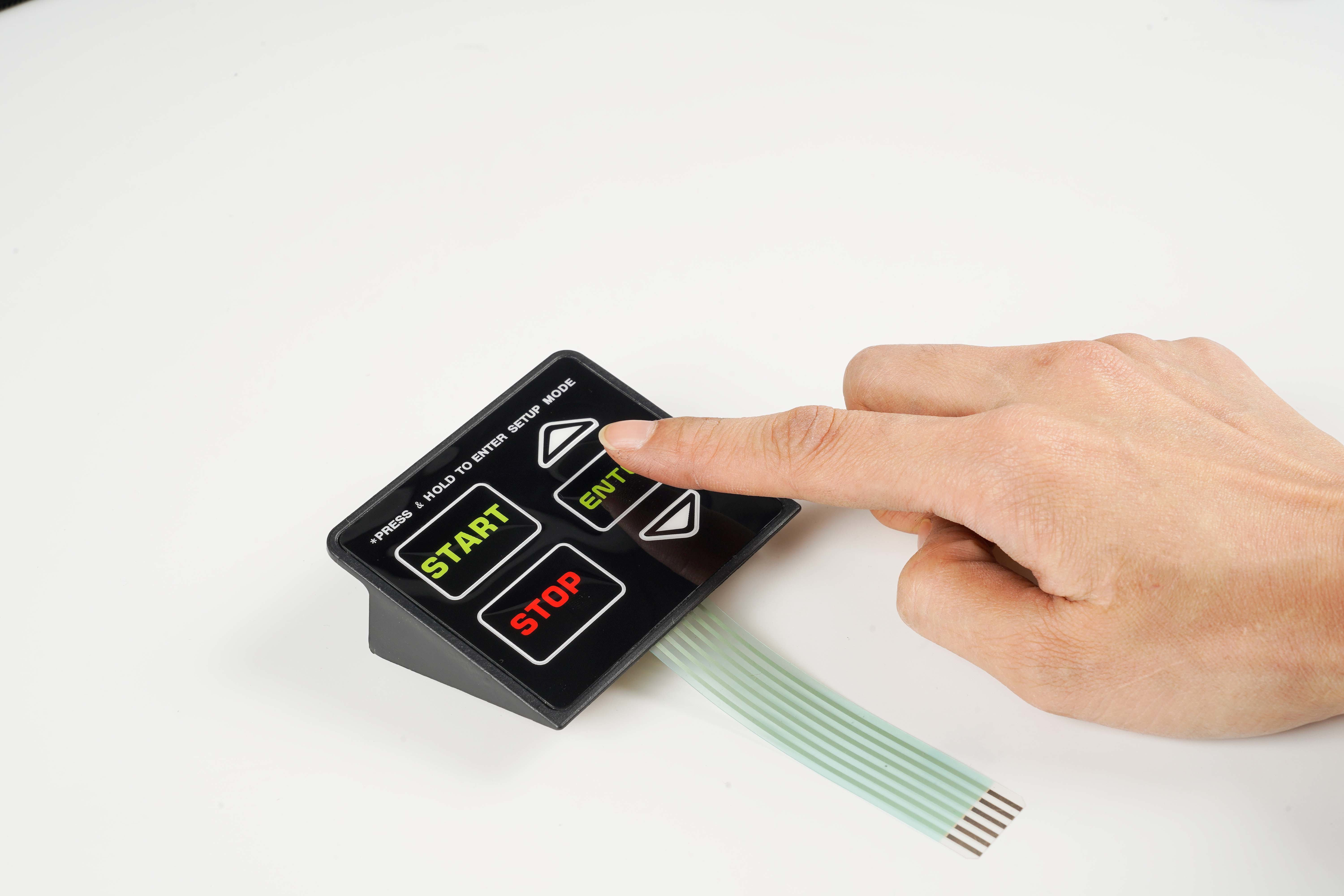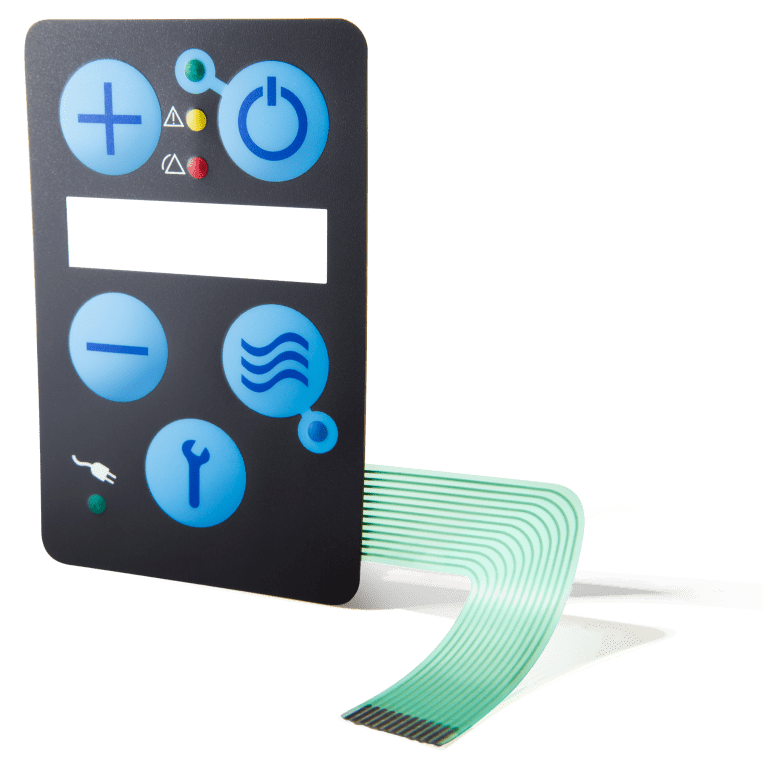The Production Process Behind Membrane Switch Over: What You Required to Know
The production procedure behind membrane switches over combines cautious layout, product option, and quality control. It starts with comprehending the ins and outs of membrane button layout and progresses with different stages, including product choices and printing methods. Each phase plays an essential duty in making sure functionality and resilience. Nevertheless, the complexities of layer building and the rigorous screening standards might reveal understandings that are not immediately noticeable. What exists beyond these foundational elements?
Comprehending Membrane Layer Switch Layout
Membrane layer switches might show up basic at very first glance, their design entails detailed considerations that assure performance and resilience. The layout procedure begins with an extensive understanding of customer needs, including the interface's desired application and environmental aspects. Ergonomics is a crucial element, as the design has to facilitate convenience of usage while ensuring that responsive responses fulfills individual expectations.Moreover, the layering of parts, such as graphic overlays, glue layers, and conductive traces, must be precisely crafted. membrane switch. This split setup not only influences the switch's responsiveness yet additionally influences its long life. Interest is provided to the sealing strategies used to secure against wetness and dust, which could compromise efficiency. Furthermore, style considerations reach visual appeals, where color schemes and aesthetic clearness enhance customer experience. Eventually, the design of membrane layer switches equilibriums performance, user experience, and durability, making certain that they satisfy the demands of numerous applications efficiently
Materials Used in Membrane Layer Switch Production
When choosing products for membrane button manufacturing, it is important to contemplate both efficiency and sturdiness. The primary materials include polyester and polycarbonate movies, which supply flexibility and stamina. These films are usually coated with glue to guarantee correct bonding to substrates. Conductive inks, normally composed of silver or carbon, are critical for developing electrical links within the switch, enabling for reliable operation.Additionally, a protective layer, such as a difficult layer, is frequently put on enhance scratch resistance and long life. The choice of backing material, such as acrylic or foam, can considerably influence the switch's tactile feeling and total user experience. Additionally, numerous environmental variables, including temperature level and moisture, ought to direct product option to ensure peak efficiency in details applications. Ultimately, the ideal mix of materials contributes to the membrane switch's performance and life-span, making educated selections vital for manufacturers.
The Printing Refine: Creating Graphics and Text
The printing process in membrane button production plays a significant role in generating top quality graphics and text. Different graphic design methods are utilized to guarantee visual allure and functionality, while mindful ink option approaches are essential for durability and performance. Understanding these components is fundamental for achieving best cause membrane layer button style.
Graphic Style Techniques
Graphic layout strategies play a vital role in the printing procedure of membrane layer switches, as they specify exactly how graphics and text will inevitably appear on the end product. Effective visuals style involves the critical use of layouts, shades, and fonts to enhance readability and visual allure. Designers usually use vector graphics for scalability, ensuring that pictures remain sharp at different dimensions. Furthermore, focus to contrast and placement is essential, as it affects user interaction and visual quality. The unification of branding elements, such as logo designs, must be managed with treatment to maintain brand name honesty. In general, thoughtful graphic layout techniques contribute substantially to the functionality and appearance of membrane layer switches, affecting customer experience and product efficiency.
Ink Selection Techniques
Choosing the ideal ink is important for accomplishing the wanted aesthetic high quality and durability in membrane switch production. Different ink kinds are made use of, including solvent-based, water-based, and UV-curable inks. Each type provides distinctive characteristics, such as bond, resistance, and adaptability to ecological variables. Solvent-based inks are often favored for their resilience and dynamic colors, while water-based inks are a lot more eco pleasant yet might have restrictions in bond. UV-curable inks offer fast curing and robust performance. Furthermore, color matching techniques guarantee that the selected inks straighten with layout requirements. Eventually, the option of ink need to take into consideration aspects such as application technique, substrate compatibility, and end-use requirements to achieve premium lead to membrane layer switch graphics and text.
Layer Building and Assembly

Material Selection Process
A cautious choice of products is vital in the production procedure of membrane layer buttons, as it straight affects capability and resilience. The main materials utilized include polyester, polycarbonate, and different conductive inks. Polyester is commonly favored for its exceptional resistance to chemicals and abrasion, making it appropriate for extreme settings. Polycarbonate, on the various other hand, supplies remarkable quality and effect resistance, which is helpful for applications calling for visibility and robustness. Conductive inks, generally composed of silver or carbon, are vital for creating reliable electric paths. Furthermore, the option of sticky materials affects the overall integrity of the button - membrane switch. Examining aspects such as environmental exposure, responsive comments, and aesthetic requirements guides suppliers in picking the very best materials for their specific applications
Layer Attachment Methods
Adhering layers in membrane layer button building is a crucial process that assures performance and longevity. Numerous bond techniques are used to protect perfect bonding between layers, which generally consist of using adhesives, heat, and stress. Pressure-sensitive adhesives (PSAs) are typically made use of for their simplicity of application and immediate bonding capacities. Additionally, thermal bonding strategies can be applied, where warmth is used to activate glue buildings, securing a strong bond. The choice of adhesion approach mainly depends upon the products included and the particular application demands of the membrane layer button. Correct alignment and uniform application of adhesives are necessary to stop defects, securing the switch operates efficiently throughout its intended life-span.
Quality Control Procedures
Assuring high quality control during the layer building and construction and assembly of membrane layer buttons is vital for keeping performance and dependability. This process normally includes a number of essential actions, consisting of detailed assessments at each phase of production. Producers make use of innovative screening approaches, such as peel examinations and bond evaluations, to confirm the integrity of layer bonds. Additionally, visual evaluations are carried out to determine any flaws in printing or material incongruities. Environmental conditions, such as temperature and moisture, are very carefully checked to guarantee optimal healing and adhesion. In addition, routine calibration of tools aids keep accurate manufacturing requirements. browse around this site By executing these quality assurance actions, producers can significantly lower the danger of product failure, guaranteeing that the final membrane layer switches satisfy the needed specs and customer assumptions.
Testing and Quality Assurance Procedures

Developments in Membrane Switch Over Innovation
As developments in technology proceed to progress, membrane switches are gaining from cutting-edge advancements that enhance their capability and individual experience. One notable technology is the combination of capacitive touch technology, which permits for more instinctive and receptive interface. This change not only boosts looks but additionally decreases mechanical wear and tear, prolonging the lifespan of the switches.Additionally, improvements in graphic overlay products have brought about enhanced durability and resistance to ecological factors such as wetness and UV light. These products now supply enhanced clearness and illumination, further raising the aesthetic appeal.Furthermore, the incorporation of clever technology is transforming membrane layer switches into interactive control board, enabling connectivity with IoT gadgets. This connectivity cultivates a seamless user experience, leading the means for applications in various markets, from medical care to consumer electronics. Collectively, these advancements placement membrane layer switches over as crucial elements in modern-day device design.
Often Asked Concerns
Just how Lengthy Does the Membrane Switch Manufacturing Process Take?
The period of the membrane switch manufacturing process can vary significantly. Aspects such as intricacy, products made use of, and production volume influence timelines, with typical manufacturing varying from a couple of days to numerous weeks for conclusion.
What Are the Usual Applications for Membrane Switches?
Membrane layer buttons are commonly utilized in various industries, including vehicle controls, family home appliances, clinical tools, and consumer electronics (membrane switch). Their flexibility and sturdiness make them suitable for applications needing easy to use interfaces and dependable performance in varied settings
Can Membrane Layer Changes Be Personalized for Specific Needs?

What Is the Life expectancy of a Regular Membrane Switch?
The life expectancy of a regular membrane switch varies, however generally, it ranges from 1 to 5 million cycles. Elements such as use, atmosphere, and worldly top quality greatly influence sturdiness and general efficiency gradually.

Are Membrane Switches Environmentally Friendly?
The environmental friendliness of membrane layer switches over differs. Some products utilized may not be recyclable, while others can be environmentally friendly. The overall impact depends on making techniques and products, requiring cautious consideration throughout choice and disposal. The manufacturing process behind membrane layer changes combines cautious design, product choice, and high quality control. It begins with recognizing the ins and outs of membrane layer switch design and proceeds with various phases, consisting of material selections and printing methods. When selecting products for membrane switch production, it is vital to contemplate both performance and longevity. A cautious selection of products is vital in the manufacturing procedure of membrane buttons, as it directly affects functionality and durability. The option of adhesion approach largely depends on the materials included and the specific application needs of the membrane button.
Comments on “Why membrane switch is a game changer in aerospace control systems”